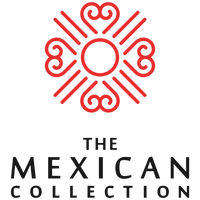Celebrating the Day of the Dead (El Dia de Los Muertos)
El Dia de Los Muertos, or the Day of the Dead as we know it, is one of the most significant and emotive celebrations in the Mexican calendar.

Essentially it is a time to honour ancestors and loved ones that have departed to the spirit world.
On this most sacred of days it is believed that the boundary between the worlds of the dead and living dissolves allowing the world of the living and the spirit world to cohabit the earthly realm.
Only on The Day of the Dead can the souls of the departed awaken and be tempted back to the living world to feast, drink, celebrate and dance with their loved ones.
When is it celebrated?
The Day of the Dead as it is celebrated in Mexico, Latin America and the United States is actually a festivity over two days: the 1st and 2nd of November. Each year celebrations begin at midnight on the 31st October.
November 1st is reserved for the spirits of children to re-join their families while the 2nd of November is for the souls of adults to return and is also known as All Souls Day as celebrated in the Catholic religion.
The symbolism of the Day of the Dead
There is nothing morbid or macabre about celebrating the dead. Throughout the two days of festivities cemeteries and alters are decorated with multi-coloured ceramic skulls lit with welcoming tea-lights and bright orange marigolds or cempasuchiles in a joyous explosion of colour.

Over time these brightly coloured flowers have earned their place next to sugar skulls as one of the most prominent symbols of The Day of the Dead.
Also known as flor de muerto or Flowers of the Dead, the importance of the lively orange and yellow marigolds date back to the time of the Aztecs.

The vibrant colour and heady scent of the flower are believed to lure spirits back to earth.
The principal emotion during the celebration of El Dia de Los Muertos is one of reunion and joyous remembrance rather than grief and sadness for the loss of loved ones. After all, the extremes of pain and joy are said to be the very fabric of the Mexican soul!
The ritual of offerings
The days are marked by the creation of alters or ofrendas where offerings of food, drink and flowers are left to entice the dead to visit.
Ofrendas are decorated with offerings for the spirits that are meant to represent the four elements: fire, water, earth and wind.
For fire, candles and tea-lights are lit to guide the journey of the spirit back home to earth.

Jugs of water are left to quench their thirst from the long trail back to the Land of the Living.
Earth is represented by food offerings for nourishment and finally wind is represented in the colourful papel picado banners decorated with elaborate cut out patterns that are said to allow the souls to pass through.
While these are traditional items that can be found on an ofrenda each alter is different and special in its own way.
It is also not uncommon to find ofrendas decorated with sentimental items such as photographs, toys, or even the favourite tequila or cigar of a departed loved one.

Famous figures from Mexican history are also often celebrated with their own alters. Artists such as Frida Kahlo and Diego Rivera are popular themes for ofrendas, as well as singers like Pedro Infante, Juan Gabriel and Vicente Fernandez or the iconic comedian Cantineflas.
The history of The Day of the Dead

The origins of this most fascinating of Mexican celebrations has its roots in Mesoamerican culture. The Aztecs and other Nahua people living in what is now central Mexico held a cyclical view of the universe and saw death as an integral, ever-present part of life.
Death was not viewed as an end in the way the modern world views it, but rather another step in the long passage to Mictlán.
The Aztecs believed that on dying a person travelled to the Land of the Dead where they journeyed for many years through nine levels to finally reach Mictlán, their final resting place ruled by Mictlantecuhtli the Aztec God of Death.
In the rituals of the native Mexican tribes of the Nahuatl family members provided offerings of food, water and tools to help the deceased with the journey through the nine levels.
Much of the contemporary Day of the Dead rituals of offering and alters are inspired by this ancient Aztec tradition.
In European culture the pagans also celebrated the dead in the autumn with bonfires, dancing and feasting.
Some of these customs survived even after the rise of the Roman Catholic Church and were adapted by organised religion as the Catholic holidays of All Saints Day and All Souls Day.

In fact, the original Dia de Los Muertos in Latin culture was celebrated in the summer months but with the rise of the Catholic Church in Latin America the days were celebrated to align with All Souls and All Saints days that are recognised in the Catholic calendar.
In Spain during the medieval age people would take wine and bread to the graves of their loved ones on All Souls Day. Graves would be covered with flowers and candles lit to illuminate the way for the souls to find their way back to their earthly homes.
The Spanish conquistadores brought some of these traditions with them to the New World, influencing the blend of traditions that we now celebrate as the Day of the Dead.
It is easy to see why people make the associated between Halloween and the Day of the Dead though the two festivities are distinctive and separate. While Halloween has its roots in Celtic culture, El Dia de Los Muertos is rooted in Mesoamerican history and Aztec and Nahua beliefs.
The beguiling Catrina
By far the most prominent symbols associated with the Day of the Dead are the calacas and calaveras; the skeletons and the skulls.

In the late 18th century the Mexican illustrator Jose Guadalupe Posada drew skeletons adorned in the clothes of the upper class to mock the morals of the bourgeois class who were adopting European fashions over their own heritage and traditions.
Somewhat ironically, the most famous of these etchings, La Calavera Catrina (The Elegant Skull) would be adopted over the years as the unofficial symbol of the Day of the Dead.
The original cartoon as drawn by Jose Guadalupe Posada depicted Chicunamictlan, the Queen of the Aztec underworld and he dubbed her La Catrina, a slang word used at that time to describe the rich.

By putting a Western bonnet on her Jose Guadalupe Posada was making a statement about the adoption of European morals at the cost of Mexican heritage. The image was meant to be an ironic statement about the loss of culture he saw in Mexican society at the time.
In 1947 the famous Mexican artist and muralist Diego Rivera enshrined La Catrina in his mural ‘Dream of a Sunday Afternoon’. The giant fifty foot fresco depicts scenes from four centuries of Mexican history in which hundreds of characters from Mexican history take a stroll through the central Alameda park of Mexico City.

La Catrina is centre stage in the middle of the fresco and holds hands with Jose Guadalupe Posada and the artist himself, uniting what was intended as a critique of the Mexican elite with a renewed acceptance of this emotive symbol as she takes her place centre stage as part of Mexican cultural identity.
Changing attitudes to El Dia de Los Muertos
In the past the Day of the Dead was a festival mostly recognised by the indigenous peoples of Mexico. This essentially native celebration gained more widespread popularity in the 1980s among the Mexican population in the United States keen to maintain the rituals and festivities of their ancestors in their new adopted homeland.
The first major festival celebrating El Dia de Los Muertos in Mexico City was held as recently as 2016. The modern day festival has evolved from a blend of Mesoamerican ritual, European religion and Spanish culture.
Celebrating now
In contemporary Mexico Day of the Dead is still celebrated with the exuberance of the Aztecs. It’s common to eat Pan de Muerto – Bread of the Dead – which is a yeast-based sweet egg bread treat covered in sugar.

Savoury dishes such as tamales are also a staple of the Day of the Dead celebrations. Tamales are a corn flour paste stuffed with different meat, poultry, salsa or vegetables and steamed slow and low in a corn husk.
Oaxacan hot chocolate, a thick spice-infused chocolate drink from the state of Oaxaca, is the perfect accompaniment for dunking the doughy Bread of the Dead.
No Mexican celebration would be complete without lashings of the deliciously spicy chocolate and chile based thick gravy-like sauce of Mole that is served with chicken or pork and a simple side of rice.

Atole is also a favourite drink for the days of the celebration. This corn-based infusion was favoured by the Aztecs and is still popular in contemporary Mexican society not only for it's cultural significance but also because it goes so well with the Bread of the Dead.
If you’re going to celebrate Day of the Dead this Halloween remember to be respectful of the tradition. No blood or gore, after all uplifting celebration and magical mysticism are an integral part of El Dia de Los Muertos.

Wish someone a happy Day of Dead by saying, “Feliz dia de los Muertos” and join in the celebration of the lives of our loved ones gone but never forgotten.

